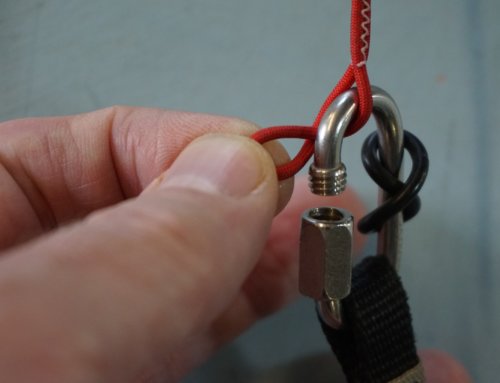The risk of suffering a deep stall has featured in SkyWings Airmail in recent months. In March, Nigel Page observed that “porosity and line shrinkage can both make a wing more prone to deep stall”. So how serious a risk are these two factors to our flying safety?
There are lots of factors that can trigger or contribute to a deep stall. As Nigel and Mel Leggett commented, rain, gusts, and too much brake can play a part. But so can poor porosity. Untreated ripstop lets air through fairly freely, and it is the coating on the nylon fabric that makes is almost impermeable when new. Over time, physical wear, contaminants and UV cause the coating to break up and break away from the fibres of the cloth, and the canopy becomes more porous.
The porosity of the fabric on the upper surface is much more important to a glider’s performance than the lower. If the upper surface becomes too porous, this will depress the internal pressure, as an increasingly significant volume of air leaks through. Whilst that’s a design feature for many emergency reserves and some skydiving parachutes, it’s clearly a defect for our wings.
All that said, it’s pretty rare for us to see wings younger than 10 years old where porosity is an issue. Younger wings with poor porosity have usually experienced some specific adverse factors, such as a lot of coastal flying with sand abrasion and salt corrosion, or a lot of UV exposure abroad, which have degraded the fabric. If your wing is older or been exposed to these factors, a porosity check is probably a good idea.
Line shrinkage is the other glider factor Nigel cited. Like reduction in porosity, this is something that changes gradually over time, and you may not notice it happening until one day, after a few years, you experience something that you wouldn’t expect to happen. And if that’s a deep stall, let’s hope it’s a rude awakening and nothing worse.
Linesets go out of trim in a variety of different ways, but a fairly common pattern is that the more lightly loaded rear lines shrink by more that the As and Bs, with the result that the angle of attack of the wing becomes progressively greater. Typical symptoms when this happens are that the trim speed becomes slower, handling more stodgy and performance on bar less effective. You might also find that the wing is more reluctant to launch.
Pilots sometimes observe these problems and send their wing in for a service. However, because the changes happen so slowly, often it’s only after a glider comes back after a retrim that the difference is fully apparent, and the extent to which performance had degraded becomes clear. A couple of weeks ago, we returned a Sigma 8 to an experienced local pilot: his wing was generally in a lovely condition but we had discovered it was badly out of trim (see trim report). After we returned it to him, he heeded our caution, and went to ground handle away from takeoff. As he pulled it up for the first time, the wing went straight over his head and collapsed in front of him – not perhaps the result you’d hope for from a wing just back from the workshop, but it showed how much less input was required now that his wing was back to the original trim. Once in the air he found it much crisper and faster, with better handling and performance – “like new”.
If your wing is out of trim and your trim speed has become much slower, you’re already closer to the stall, and your wing is much more susceptible to stalling in gusts. If you continue to use a familiar amount of brake when flying, it’s clear that the risk of a deep stall is much greater than it should normally be.
How can I tell if my wing may have become more prone to deep stalls?
If you’re beginning to suspect that your wing might be more at risk of a deep stall because some of the symptoms I’ve described seem familiar, what other tell‑tale signs could you look for to confirm whether a service might be a good idea?
- Whilst there are differences, most gliders, when loaded in the middle of their certified weight range, have a trim speed that is very similar. So ask a fellow pilot to fly alongside you “hands up” for a minute or two, and see whether you fall behind them. If you do, that’s a potential pointer to your wing being out of trim.
- If you find you can’t keep up on bar during transitions, or you’re sinking out faster than those around you, again, it might be the trim on your wing that’s to blame.
Gauging porosity without equipment is difficult, but if you wanted to attempt it using your mouth, here are a few pointers. Don’t blow: suck like you would when drinking through a straw, with your mouth on the outside surface of the fabric, as it’s much easier to judge the volume of air this way. Compare your result to a piece of impervious plastic in which you’ve made two small pinholes with a fine pin – very roughly, that corresponds to a poor porosity, and if it’s worse than that, there’s potentially cause for concern.


